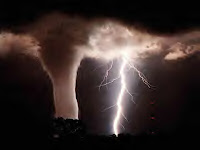Every wannabe pundit knows the drill: Do something cool, preferably in Silicon Valley or against all odds; talk and write about what you learned everywhere you can; build a following; then get a book deal. That’s what Guy Kawasaki did, converting his four-year stint as Apple (AAPL)’s chief evangelist into a 1989 book on guerrilla marketing called The Macintosh Way. Kawasaki has since produced 11 more books and established himself as a marketing guru and venture capitalist. With 1.2 million Twitter followers and a popular blog, he’s a brand.
So when Kawasaki self-published a book on Google+ (GOOG) called What the Plus, he was thrilled with the results. Instead of the usual 10 percent cut from publishers, he took home 70 percent of sales. Gone were the long lead times, distracted editors, and paltry marketing efforts. Moreover, he says, “nobody pays attention to who the publisher is today.” What matters is reader ratings, of course. “If it has five stars from Schmoo Press, you’ll buy it. If it’s from Random House and has two, you won’t.”
No surprise, then, that Kawasaki chose to self-publish his latest book. The topic: how to self-publish. APE: Author, Publisher, Entrepreneur—How to Publish a Book, which he co-wrote with Shawn Welch, is a guide to help others publish their own prose too. At 386 pages—if you’re paying as much as $25 for the print edition—it covers everything from coming up with the idea to marketing it. The book is $10 on a Kindle and free for members of Amazon (AMZN) Prime.
The bigger question: Why publish at all? With more than 235,000 self-published books in the U.S. last year, the odds of writing a bestseller are slim. While you no longer need to pay a vanity press thousands of dollars to put out a book (though services like Penguin’s (PSO) Author Solutions can charge that and more), you still need to invest thousands of hours to write something that few are likely to read. And getting noticed amid the rising tsunami of books can be even harder than writing it.
That doesn’t mean it’s not worth the effort. Self-publishing can be a useful platform for establishing your credentials, for anyone who has a compelling idea or area of expertise. Most blogs don’t get read, either, but brands such as TechCrunch, Mashable, GigaOM, and Perez Hilton began as modest one-person shows. Niche appeal can be profitable if you hit the right audience. If you think of a book as an investment in your brand rather than as a revenue source, it could be a worthwhile effort. Send it to clients; dive deep on a passion and have fun. The most you should spend on production—from copyediting to cover design—is $4,000, in Kawasaki’s view. And then? Get on social media, of course, and hawk it everywhere.
What if you’re, say, a fledgling crime writer? “I would get on social media and start positioning myself as an expert on mysteries and crime,” Kawasaki says. Pass along useful links, follow other writers, become known for your expertise, and then announce you have written a crime book. If it rises on the Kindle bestseller list, you might get a deal from a traditional publishing house (à la Fifty Shades of Grey). And that, even in Kawasaki’s world, remains the holy grail for most authors. (Full disclosure: I published my book Fraternity with Random House last year.) Whether your deal is with Random House or Amazon Encore, which signs self-published authors whose books do well, there’s still value in having a big name back your work. And Kawasaki knows firsthand the value of self-publishing when you’re a big name.
